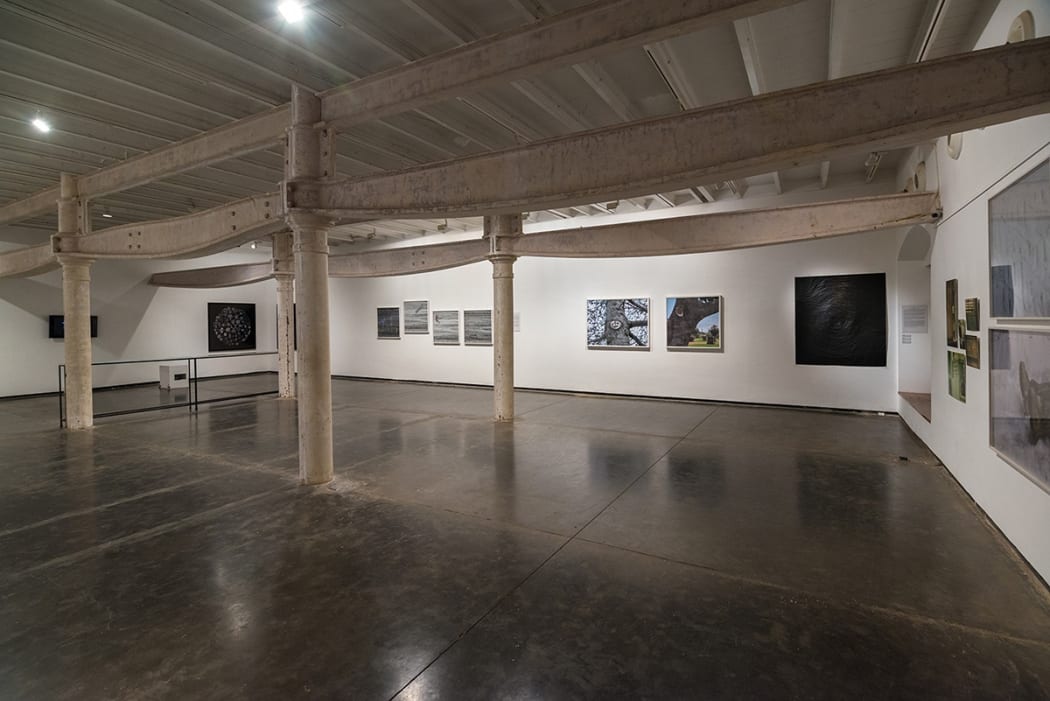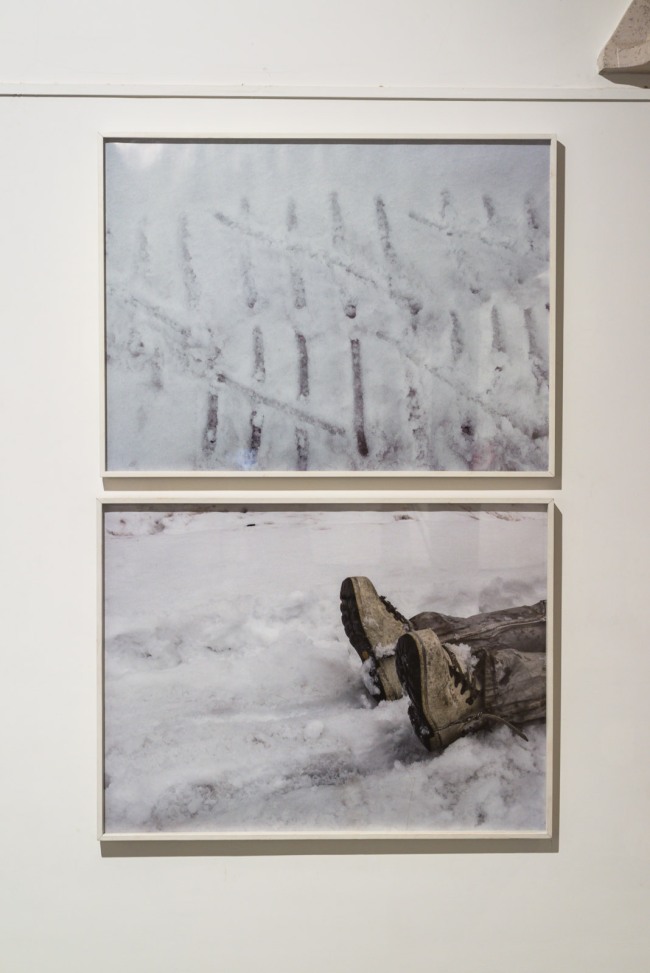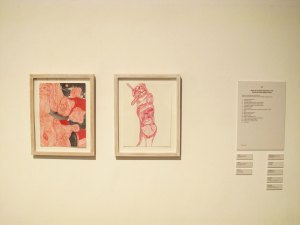
Exhibition text by Prajna Desai, Curator
Participating artists: Baptist Coelho, Chirodeep Chaudhuri, Hemali Bhuta, Huma Mulji, Mahesh Baliga, Neha Choksi, Raqs Media Collective, Rohini Devasher, Rehaan Engineer, Sandeep Mukherjee, Sarnath Banerjee, Shreyas Karle, and Tejal Shah
I
DRAWING IS THE IDEA
Shaker drawing, which flourished in the United States during a spiritual revival in the 1830s and 1840s among secluded pockets in Massachusetts and New York, was interchangeable with transcendent practice. Seeded by visions, the drawings were harvested mainly by women. One modern Sister R. Barker (1890-1990) described it as “the season of the Spirit Drawings whose messages are now hidden in the deep things of God.” As solitary exertions, the drawings might have ebbed within the benign roster of female labour, equally homebound and private. There was also the peril of prohibition. For Shakers, activity beyond hygiene and nutrition was grounded in the common sense of work, be it practical or spiritual, or had to be in order to warrant effort. Sacralizing the drawings was a necessary save that confirmed the makers as spiritual ‘instruments’ and validated their arguably eccentric pursuit.
Modest means aside, pen, ink, and water colour limn lambent visions. Graphically precise and annotated by esoteric symbols, ecstatic speech, and hard to read script, Shaker drawings juggle communal architecture schematized as distilled forms and decorative gewgaws. Circles, squares, rectangles, and columns figure prominently among discrete images of fussy clocks and chintzy necklaces gleaned imaginatively beyond the frugal backcloth of Shaker homes. In others, are pictures of fruit, flower, foliage from the natural world, all under the umbrella of visions.
Where to some the physical act of witness or vision might read as record, Shaker documents name the drawings astutely, as signs, notices, rolls, sheets, rewards, tokens of love, even. Which says that the human ‘instruments’ were far from documenting. Rather to draw was a functionally precise theory of how penetrate spiritual truth, and drawing the physicalized idea of how to get there.
Enter Mahesh Baliga.
II
A COMMON SPELL, or everyone draws
There was nothing cavernous about the Stockton State Hospital or DeWitt State Hospital near Sacramento city in northern California. Yet for thirty two years (1931-1963) of residency split across these establishments, Mexican-born migrant Martín Ramírez drew and painted with the catatonic intensity of a man mentally on the run but trapped inside a cave. Locomotion and stasis was his elemental trope. Or so it would seem from the mix of dizzying perspectives inside confined spaces and ambiguous claustrophobia recurring across his 400 preserved works. A true survivalist, the artist used what was on hand and wasted nothing. He used found paper, wrappings, mushed coloured crayons, concocted glue from spit and starch, and graphite sticks.
Ramírez was technically not an inmate, but institutionally detained for mental instability after eight years as a railroad worker in California. His output while certainly not crackpot expertly re-fashions the neurotic tendency towards compartmentalising thoughts and expressions. Vacant porticoes, a klieg lit stage, pod-like cars, trains ensuing into and out of tunnels, and stunned Madonnas, all these proliferate as disjointed vignettes. There is a back story to it all but it is not visibly coherent. For instance, a repeating horseman motif might echo his previous life as a rancher in Mexico, but it does not tell what that meant to Ramírez, whether he liked riding or wanted to escape it.
Rather, it’s the throbbing line webbing across the picture plane that makes the clearest link across works. This linear pattern is concentric, elliptical, and parallel in form, and replicates obsessively, causing the impression of animated sound waves pervading the frame. If it is true Ramírez spoke little during his near lifelong hospital tenure, it makes sense something else in his life, feasibly his pictures, would pulsate with noise. Everyone needs a shout once in a while.
Even so, the oral resonance, if any exists, is not of speech but visual chant, or pictorially repeating invocation, something along the effect of doodles and tally marks. Of these forms, both being the most common graphic output of incarceration, there is no record in the artist’s biography. But the ostensibly self-regenerating line of Martín Ramírez unmistakably shares their repetitive focus and functional abstraction—as if it too were muttering under the common spell.
Also in Baptist Coelho and Chirodeep Chaudhuri.
III
HOW TO PRESERVE A SCRATCH
The archaeological site of Comalcalco which gives the adjoining modern town its name, was once the centre of a thriving city (AD 600-800). Built within kissing distance of the Gulf of Mexico, a day and a half by foot inland from the lagoon of Mecoacán, it spanned 42 square kilometres and marked the westernmost edge of Maya civilization.
Comalcalco was designed typically. Great ceremonial centres were scaled by open plazas, tall pyramids, vaulted, palatine buildings, and longitudinal courts in which to play ball. Yet it was special by choice of material. Prompted by scarce limestone deposits, common elsewhere across Maya cities, engineers here chose to build with oyster shell mortar sourced from the nearby lagoon, coastal palm fibre plentiful by the shore, and wood logs, but most notably, with thousands of fired clay bricks.
Hence the derivation Comalcalco from Nahuatl—a widely spoken Maya language—in which comal means ‘griddle’ on which to bake tortillas, calli is ‘house’, and the locative ‘co’ translates as the preposition ‘in’. This gives the toponym Place of the House of Griddles in reference to Comalcalco architecture’s baked bricks which resembled the common household griddles used in the 16th century. That was when the site discovered by Spanish invaders got its name.
Etymology apart, the bricks intrigue by what’s on them. Inscribed legends and motifs are legion. Four percent of the now over hundred thousand bricks preserved by excavators feature animals and birds, illegible symbols, sparse text, figures, and images of buildings. Some images are in low-relief, but most are scored with an eager intensity of line. Oddly enough, this marked lot was treated democratically. Because mixed in with the blank bricks, mortared over and painted with slurry, scholars believe the inscribed bricks were never meant to be seen. Yes, packing them away from sight might suggest it was the act of making the bricks that was important, not the material objects, which in the end is seemingly at odds with the fact of the inscribed bricks being left unwet before they were mortared. The procedure ensured that when the mortar dried and compacted it didn’t stick to the scratched drawings, kept them safe as it were.
This of course is not the only way to preserve a drawing.
As Sandeep Mukherjee and Neha Choksi show.
IV
CODES, or the secret of lines
Khipu are knotted string mechanisms that were used for official record and communiqué in the Inka empire. Khipu is the word for ‘knot’ and ‘to knot’ in the Quechua dialect that is spoken among the modern Quechua of southern Peru near the ancient Inka capital of Cusco. The devices were made of coloured yarn or thread spun from camelid wool or cellulose from cotton. Like other oblique systems of record, such as labanotation dance records, for instance, khipu can be beautiful to look at. When spread on a level surface they resemble eerie deep-sea creatures, ethereal, stringy, and enigmatic. Structurally, a khipu comprises a flexible suspension line with pendant strands of varying lengths and colours. Each strand holds clusters of knots which come in three main types. Each cluster is a digit in base 10, a number which would have been read, scholars suggest, either numerically or as a code denoting non-numeric data or concepts about things, persons, and place.
The reading order always linear moves horizontally and vertically across cord colour and spacing, colour seriation, size or knots, spaces between and across knots, and repetition of colour and knots. Colour transformation was meaningful as was a shift in scale and magnitude of knots. The slightest structural variation in knot and ply direction and shifts in hue would have altered information; and that only a handful have been only partially decoded suggests the device called for its own literacy.
Khipu readers, mostly members of the ruling class, were trained in yacha huasi, or houses of learning, sort of like modern universities, or boutique schools. Seniors and graduates joined the bureaucracy and maintained the secrets of the realm or re-communicated them in time of need. No different was the khipu’s behaviour, which bent equally to control and manipulation. Additions were possible by proliferating the strands in length and looping more knots to bloom greedier clusters or undo old ones. Whether or not this actually took place, the possibility of extension was ever latent.
Because unlike marks on a page, a line freed in air seems to have a life of its own.
As in Raqs Media Collective, Hemali Bhuta, and Rohini Devasher.
V
THERE ARE AS MANY DRAWINGS IN THE
WORLD AS THEIR FORMS OF LINES
Seventeen meanings for the word ‘line’ From Samuel Johnson’s Dictionary of the English Language (1775)
1. Longitudinal extension
2. A slender string
3. A thread extended to direct any operations
4. The string that sustains the angler’s hook
5. Lineaments, or marks in the hand and face
6. Delineation, sketch
7. Contour, outline
8. As much as is written from one margin to the other; a verse
9. Rank
10. Work thrown up; trench
11. Method, disposition
12. Extension, limit
13. Equator, equinoctial circle
14. Progeny, family, ascending or descending
15. A line is one tenth of an inch
16. A letter; as in, I read your lines
17. Lint or flax
In work by Tejal Shah, Shreyas Karle, Sarnath Banerjee, and Rehaan Engineer.
VI
DRAWING FANTASY, or basic truths
Santa Maria del Priorato or the Church of Our Lady of the Priory in the Villa of the Knights of Malta in Rome maintained a blank charisma for almost two centuries after its construction in the 1550s, and became tastefully more so after the completion of Giovanni Battista Piranesi’s renovation designs in 1764-66. One cares about this church for three reasons. It was Piranesi’s sole architectural commission in a lifelong affair with re-envisioning classical architecture and has housed his tomb since his death in 1778. The third reason is atmospheric and visual. It requires a leap of faith to reconcile Piranesi’s cautious renovations with the vertiginous images of architectural space on which rests his vaunted reputation as a proto-surrealist.
Piranesi’s Carceri d’Invenzione or Invented Prisons (1745-50, 1761) are fantastic even today. The series of 16 etchings are imagined sums of classical architecture in its wholesome and ruined state. Deep cavernous interiors, labyrinthine warrens, and swirling staircases interspersed by audaciously high bridges hang over large machines bathed in technically precise chiaroscuro. As if the eye is viewing up from a hole in the ground, a distant and partially subterranean vantage builds a delirious picture of Roman ruins from which Piranesi borrowed the basic blocks of his fanciful constructions. In this peculiar aggregate effect, the Carceri play with the notion of Renaissance Wunderkammern or cabinets of curiosities—physical rooms in fancy houses filled with exotic and wondrous objects culled from early exploration across the world. The Carceri prints present a microcosm of Classical Rome over which Piranesi had the most exquisite control. But the pervasive sense of distortion muddies that fascination, and questions what exactly is real about the past.
Albeit restrained, a similar wunderkammern frame encloses Piranesi’s original design for the piazza of Santa Maria del Priorato that was built from scratch and iconographically embellished with unrelated citations. These include the antique site history on which the church was built through Italic cult symbols referring to the native goddess Bona Dea, Etruscan terracotta sculpture motifs from ancient Tuscany, and reproductions of the obelisk form from distant Egypt. But here the physical distance spanning the juxtapositions flattens potential surprise. Instead the piazza exudes a Neo-Classical grandeur in tune with the antiquarian vogue among certain quarters for reverent impressions of the past.
By this time, bowing to expansionist effects which enabled the rich to avail of foreign curios more easily, aristocratic wunderkammern had already given way to the earliest state Kunstkammern or art rooms (museums), institutions that sought to classify inventory of art and science in so-called logical taxonomies. Likewise, the Carceri, in particular in the first state prints with their peculiar sketch-like effect, also press the curiosity-of-the cabinet relationship with old Rome through the more analytic filter of 18th century science and modernism.
Let’s just say, it was a case of the humble drawing going quicker to the quick than the colossal form.
As perhaps in the way of Huma Mulji.
























